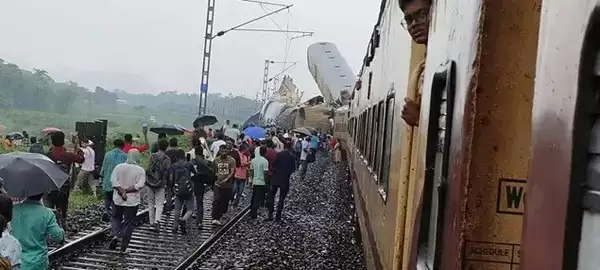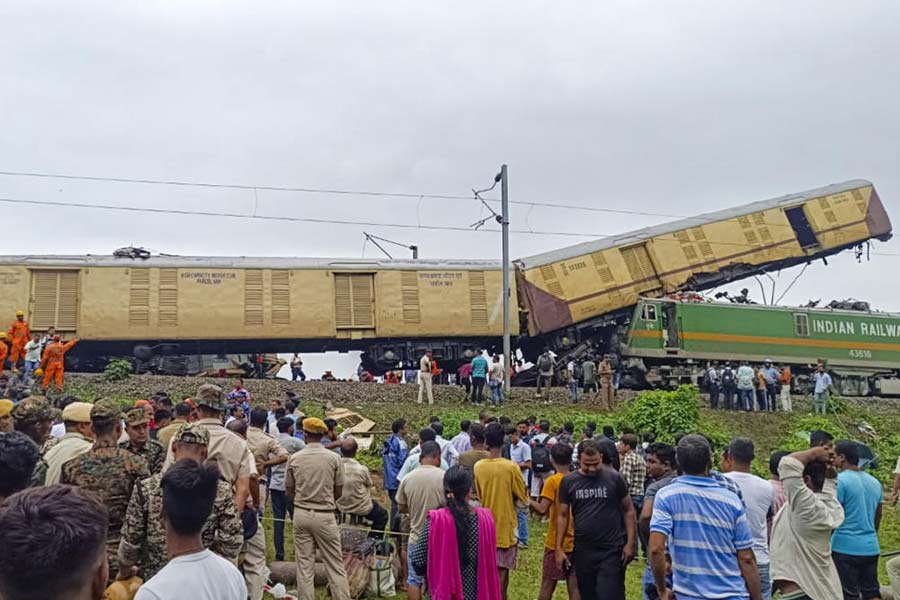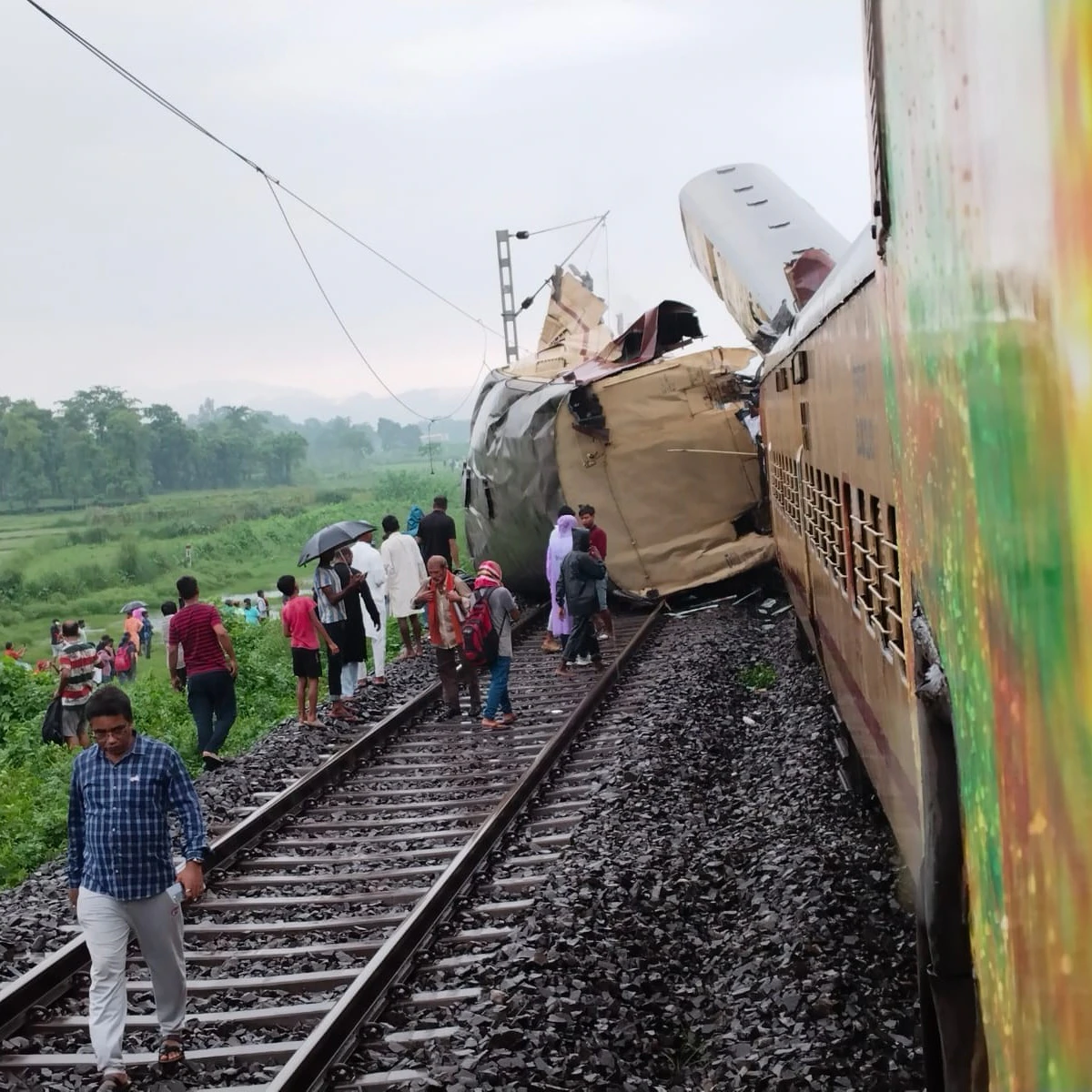By – Shubhendra Singh Rajawat
One person stated that the incident occurred about 8:35 a.m. As far as we know, the Kanjanjunga Express was moving slowly at the moment, and a train approaching from behind collided with it.
The death toll from the tragic collision between a freight train with the Kanchenjunga Express in New Jalpaiguri, West Bengal, has risen to nine. According to the information available thus far, 50 passengers were hurt in the crash. The freight train struck the Kanchenjunga Express standing on the track from behind. The catastrophe was so severe that the freight train’s entire coach was suspended in the air. Many freight train coaches and the train itself derailed. Questions are being asked about why this horrible disaster occurred and why the railway’s Kavach system did not work here. Initial reports indicate that the freight train driver ignored the signal. People and passengers present on the scene described the incident as they witnessed it…

Railways has announced compensation.
Union Railway Minister Ashwini Vaishnav has expressed condolences over the train disaster in West Bengal and provided a compensation package of Rs 10 lakh for those who died, Rs 2.5 lakh for those who were critically injured, and Rs 50 thousand for lesser injuries.
What caused the goods train and Kanchenjunga to collide?
A witness at the accident site said “This incident occurred at 8.35 a.m.” The Kanjanjunga Express was moving slowly at the time, and a goods train approaching from behind collided with it.
Did the driver of the freight train violate the signal?
According to the report, the goods train went around the signal and hit Kanchenjunga. The photographs from this tragedy are also heartbreaking. The bogies are piled up one on top of the other in these images, indicating that the crash was serious.

Why might such a situation have arisen?
- The train is signaled at the nearest station.
- Or there could have been a technical issue with the signal.
- It is possible that the pilot did not perceive the indication provided.
There are usually two to three trains on one track, although they are always separated by a consistent distance. This is why signals are regarded so crucial. The indicator indicates that if there is another train ahead, it will be red. If the light is green, you can take the train forward. However, the ministry claims that this is an example of signal overshoot. This signifies that the goods train did not receive a green signal to proceed, but it did so anyhow.

In the madrasa, a tent for the injured was established.
The police officer stated, “The situation is somewhat critical right now. A freight train struck it from behind. The train’s three bogies derailed, killing five persons in all. We have securely evacuated the passengers and their baggage. They were transferred to a camp set up in the local madrasa. After receiving first care here, they will be sent to the hospital in New Jalpaiguri.”

